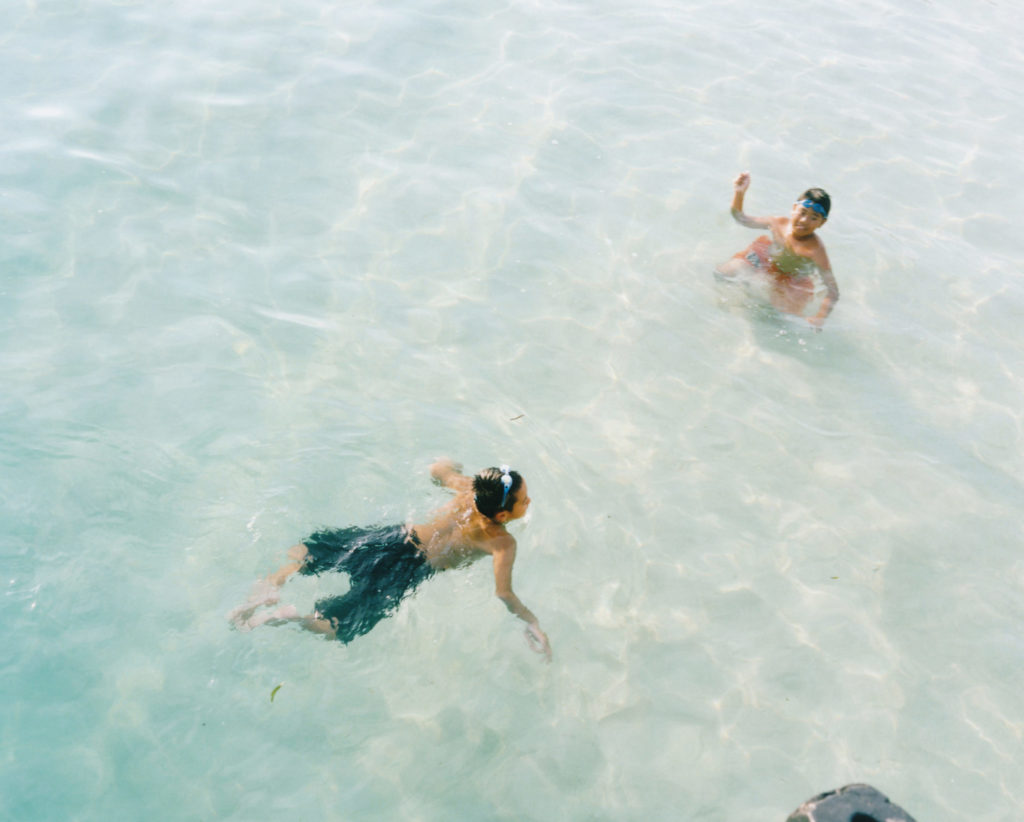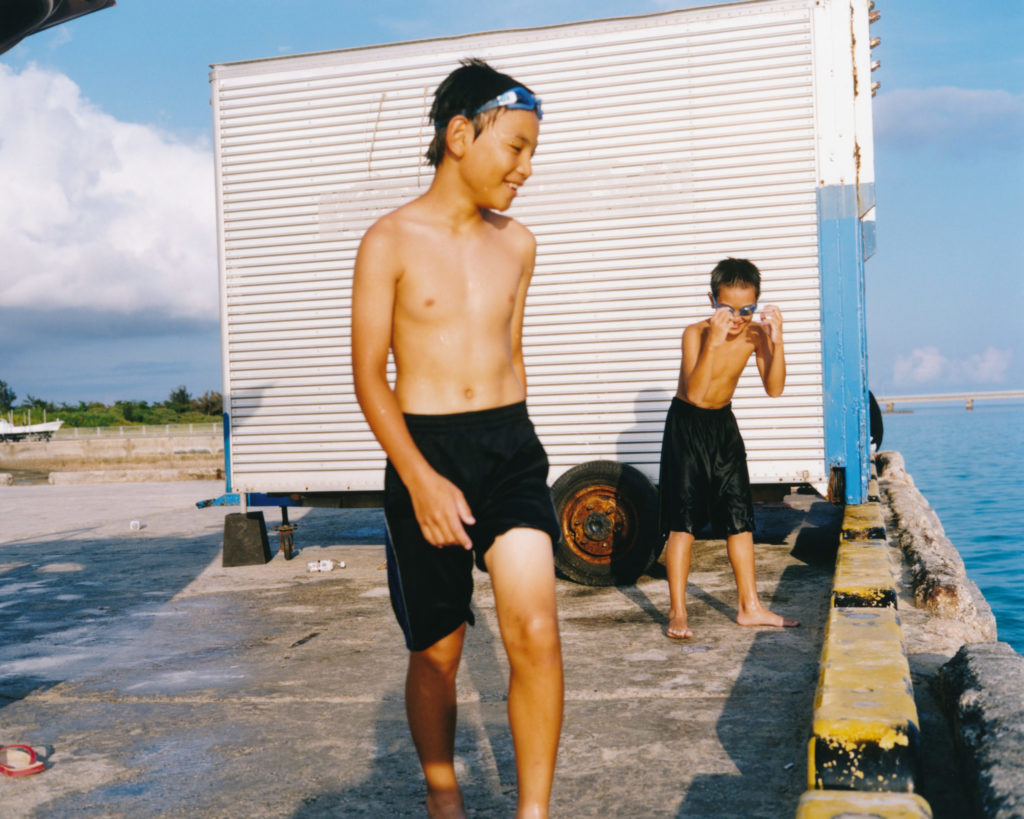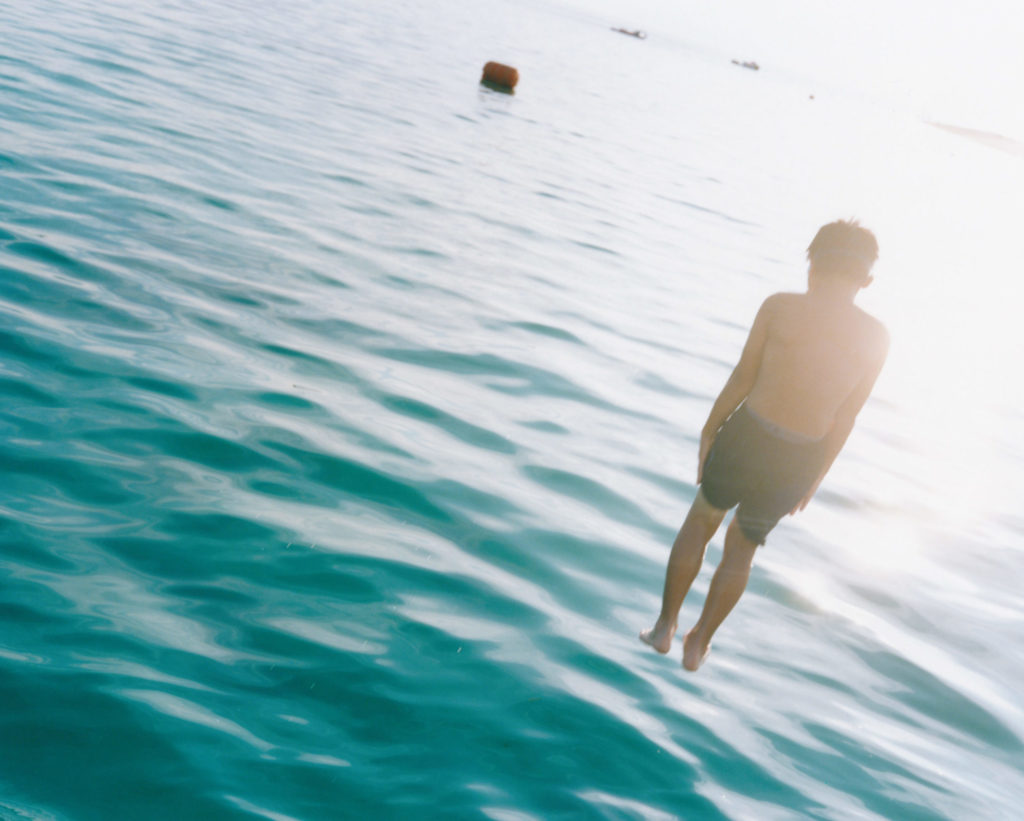
Waters of Recovery at Miyakojima
Where is the ideal place for recuperating from an arduous expedition in the Himalayas? That’s easy: a warm place. After a stretch at high elevations with low oxygen levels, being wrapped up in a heavily insulated down jacket, and having navigated a route as tricky as a tightrope in a state of nonstop tension, naturally, you long for a place that doesn’t keep you on alert, where the time flows gently by, where you can throw on nothing more than a T-shirt and shorts, plonk yourself out under the big sky, and drift in the sea.
I have seen many a climber complete a grueling trek through the Himalayas, get as far as Nepal’s capital of Kathmandu, and instead of heading back to his home country, board a Thai Airways flight for Bangkok, and from there, catch a smaller plane bound for one Thai resort or another. The desire to heal a body that has lost weight and put on muscle draws people to the southern islands. My destination, however, isn’t a beach in Thailand but Okinawa’s Miyakojima Island. Yonaha Maehama Beach—known to locals as “Maibama Beach”—is perfect for stretching out my sore limbs on the white sand, floating in the water when I feel like it, and just laying back and going barefoot until dusk.
Normally, I take routine photo trips to Miyakojima about every other month. But this year, I have only been to the island a few times owing to the COVID-19 pandemic. Still, during each stay, I always hit Maibama Beach and take a dip in the ocean and unwind. For me, the waters of Miyakojima offer the benefits of recovery and repose. I find them far more relaxing than a hot spring bath.

In the summer, the Miyakojima sun is too bright to stay outdoors for hours on end. This goes for the beach as well. If you go when the sun is still up, you won’t get a tan but more likely wind up with sunburn. My advice is to go late in the afternoon, admire the stunning sunset, keep watching until the sun sinks completely into the horizon, and then start thinking about supper.
In the autumn, the beach attracts swimmers until around the end of October. If the weather is really clear and gentle, I imagine you could swim well into November. I have never seen anyone swim in the winter, but a stroll along the beach feels good enough. Maibama Beach caters to visitors year round—not only tourists but also neighborhood men walking for their health and local families walking their dog. This year has seen a plunge in large groups of foreigners arriving on a tour bus, leaving the beach quiet and peaceful.
I took these photographs one summer afternoon. The local children were there jumping from the levee into the water over and over again. When that ceased to be such a great challenge, some kids climbed on a truck parked at the end of the levee and dived in from a higher platform.
Yonaha Maehama Beach may not be the best place to go snorkeling, since there aren’t any coral reefs, but it’s just right for diving, walking, and enjoying the healing effects of floating. I plan to stay on the island again at the end of the year. Hopefully the waters of Miyakojima will melt away the gloom of being unable to travel.

Naoki Ishikawa
Naoki Ishikawa was born in 1977 in Tokyo. He received the Newcomer’s Award from the Photographic Society of Japan and the Kodansha Publication Culture Award for Photography in 2008 for New Dimension and Polar, the Domon Ken Award in 2011 for Corona, and the Lifetime.
http://www.straightree.com












